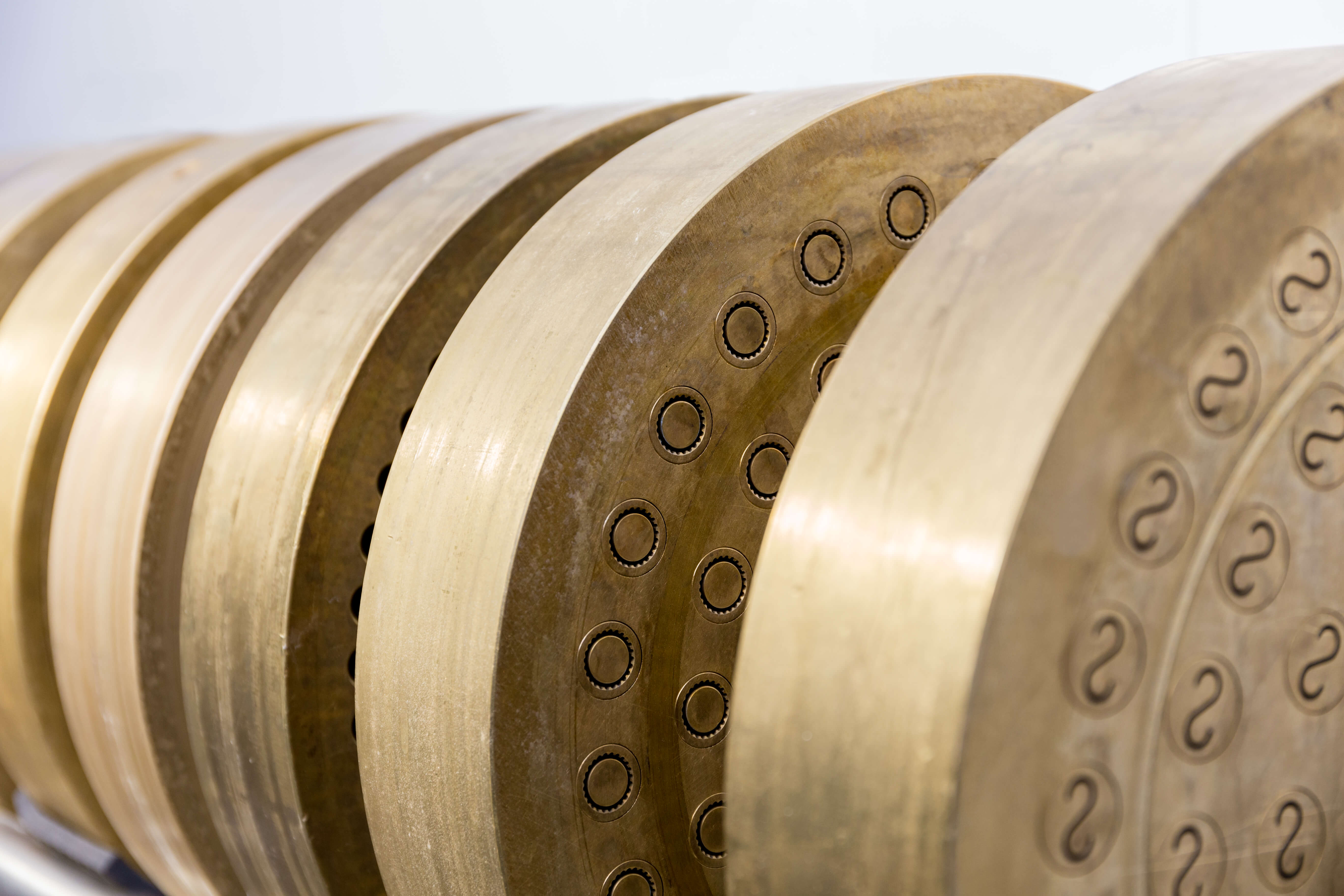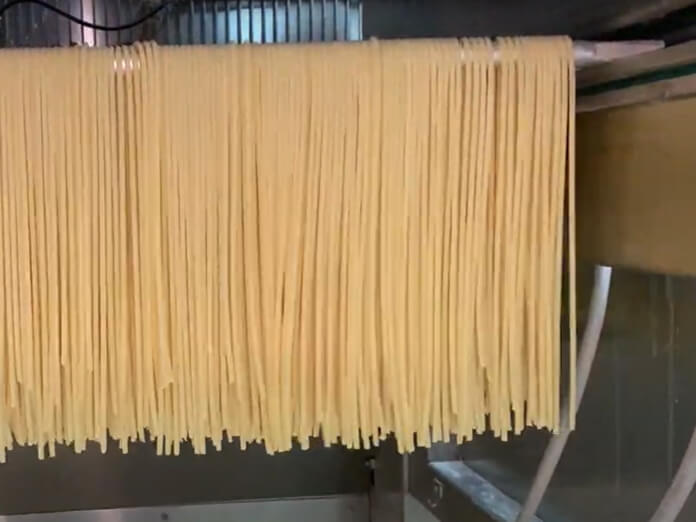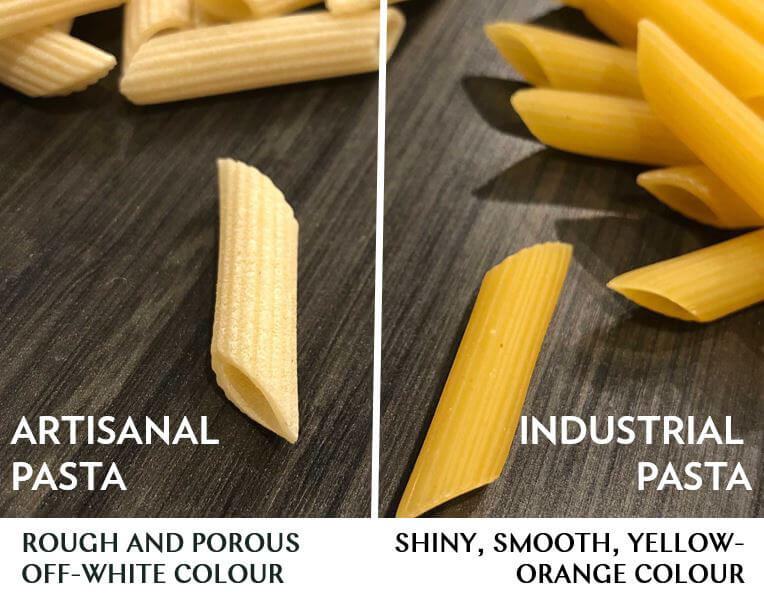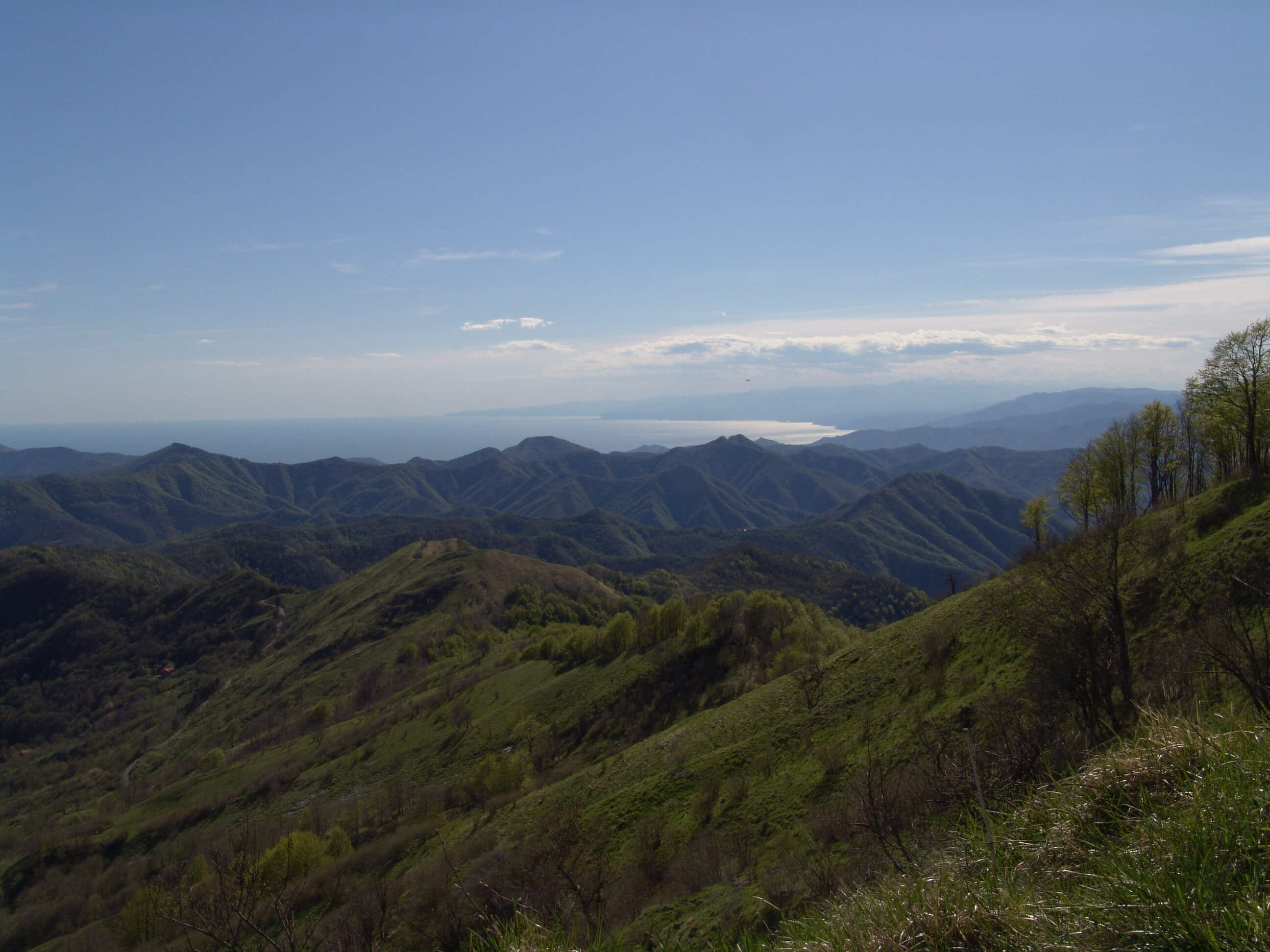October 01 2021
4 criteria to differentiate between artisanal pasta and industrial pasta
1. How the pasta is shaped
Industrial pasta is extruded with Teflon to maximize profitability by speeding up pasta production. We shape our pasta in bronze dies, which give it a lovely porous texture to which the sauce better adheres.

2. How the pasta is dried
Our handmade pasta goes through a long drying process at 30°C for 12 to 20 hours, depending on the shape’s thickness. This ensures that the center of the pasta stays firm and cooks less than the outside once it’s immerged in boiling water. Our long pasta is dried on racks and packaged by hand.
Their signature "U" shape symbolizes its artisanal production and cannot be industrially replicated.
3. How the pasta looks
Due to its Teflon processing, industrial pasta is shiny and smooth, which prevents the sauce from adhering to it and explains why it sticks to the bottom of the plate. The industrial pasta is yellow-orange colour. Artisanal pasta does not absorb the sauce, keeping it on the surface of the dish.
Thanks to our high-quality bronze casts, the surface of our handmade pasta is rough, and its texture is porous, allowing it to better absorb the sauce.
4. Where ingredients are sourced
Real handmade pasta is produced in Italy with Italian durum wheat semolina. Our pasta is made in one of the purest areas in Italy: in the mountains of the Antola nature reserve. Our pasta is made with the highest quality, glyphosate-free, Italian durum wheat semolina.


